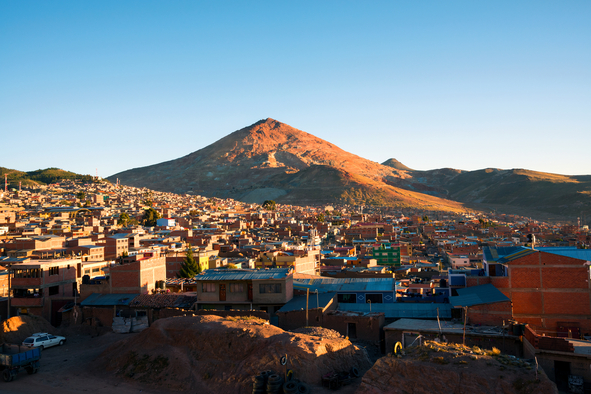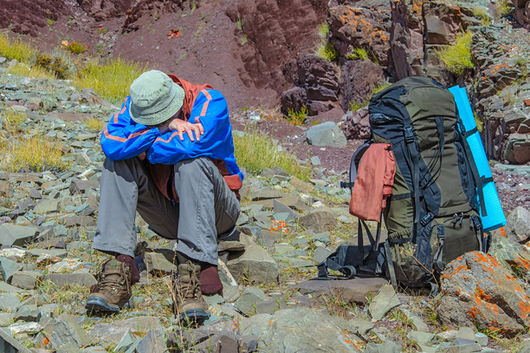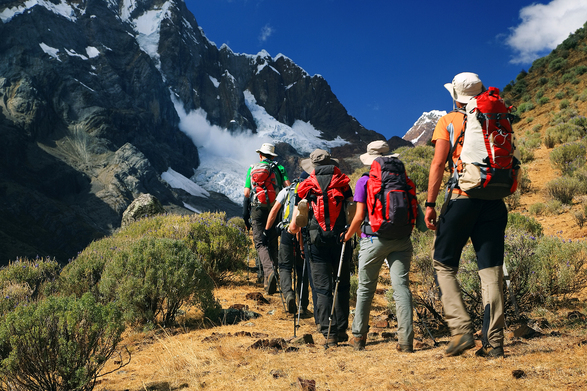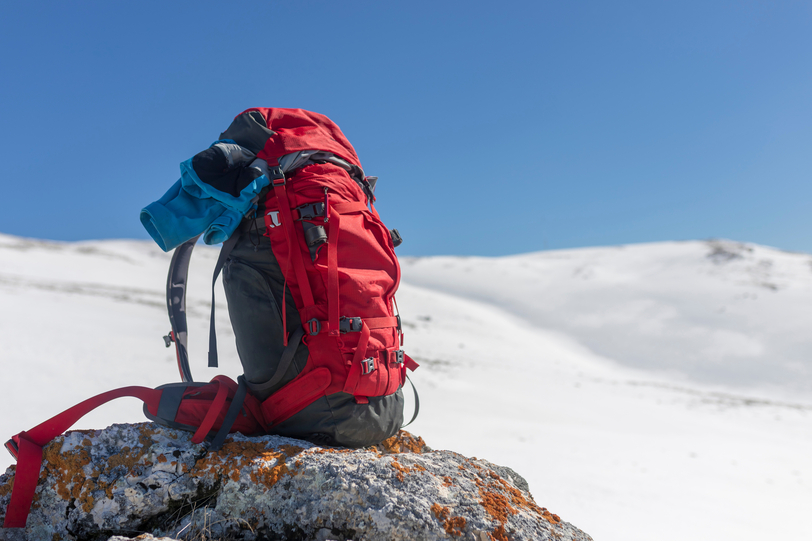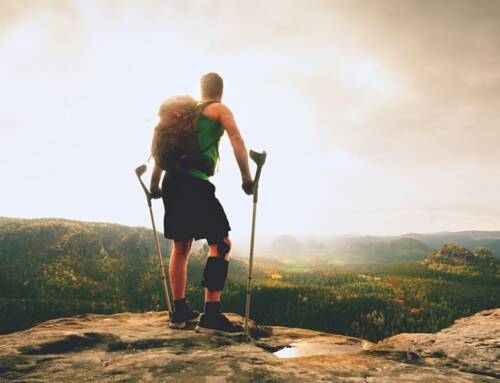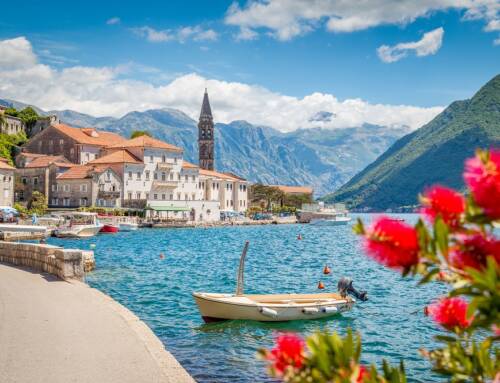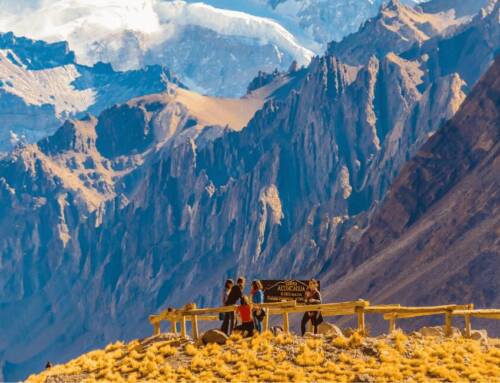Welcome to Heymondo’s guide on altitude sickness! Are you planning a trip to a high-altitude destination and wondering what you need to know to stay healthy and avoid altitude sickness? Look no further!
Altitude sickness, also known as Acute Mountain Sickness (AMS), is a condition that can occur when you ascend to high altitudes, typically above 8,000 feet (2500 meters of altitude). It is caused due to the reduced amount of oxygen at high altitudes, leading to headaches, dizziness, fatigue, and difficulty breathing.
Altitude sickness is widespread in mountain areas, where the atmospheric pressure and the partial pressure of oxygen in the air we breathe decrease as we climb higher. If you plan a trip to a location with high altitudes, significantly above 4,000 meters high, it is essential to be aware of the potential risks of altitude sickness and take steps to prevent it.
This guide will provide you with all the information you need about altitude sickness, including how to recognize the symptoms, how to prevent it, and what to do if you experience it. So keep reading to learn everything you need to know about staying healthy at high altitudes!
Index
- Countries where you can suffer altitude sickness
- When does altitude sickness start?
- Symptoms of altitude sickness
- Precautions to avoid altitude sickness
- Treatment of altitude sickness
- Consequences of altitude sickness
- How long does Altitude Sickness last?
- Frequently asked questions
- If you are traveling to high-altitude countries, don’t forget your insurance
Countries where you can suffer altitude sickness
There are many countries around the world where you can experience altitude sickness, as they have high-altitude areas that can cause the body to struggle with the lack of oxygen. In Latin America, three countries, particularly, have populations at the highest altitudes: Peru, Bolivia, and Chile. These countries are home to the five highest locations in the world: La Rinconada, Potosí, Cerro de Pasco, El Alto, and Parinacota.
These locations are above 4,000 meters of altitude and are known for their breathtaking beauty. However, it’s important to note that the risk of altitude sickness can be present when visiting these areas, and it’s essential to take precautions to ensure that you don’t experience any adverse effects while traveling.
1. Peru
In Peru, for example, La Rinconada is located at an altitude of 5,100 meters above sea level and is known for its potential for altitude sickness. The presented symptoms at this altitude can range from mild to severe, depending on the individual and the amount of physical activity they engage in. To prevent altitude sickness, it is essential to acclimate to the altitude slowly by ascending gradually and allowing your physical-body time to adjust to the lower oxygen levels. It is also essential to stay well-hydrated, avoid strenuous physical activity for the first 24-48 hours after arriving at a high altitude, and avoid alcohol and tobacco.
2. Bolivia
Bolivia is a country in South America home to many high-altitude destinations, such as the city of Potosí. Located at an altitude of 4,090 meters above sea level, Potosí is known for its high altitude and the potential for altitude sickness. The symptoms at this altitude can include headache, dizziness, and difficulty breathing. To prevent altitude sickness, it is essential to acclimatize slowly and take steps to ensure that you get enough oxygen, such as taking oxygen supplements or using oxygen tanks.
3. Chile
In Chile, Cerro de Pasco and Parinacota are both at altitudes above 4,000 meters and can cause altitude sickness. The symptoms of altitude sickness at these altitudes can range from mild to severe, depending on the individual and the amount of physical movement they engage in. To prevent altitude sickness, it is essential to acclimatize slowly and take steps to ensure that you get enough oxygen, such as taking oxygen supplements or using oxygen tanks.
When does altitude sickness start?
Altitude sickness usually appears at altitudes of 4,000 meters above sea level or higher. However, it can also occur at lower altitudes, such as 2,000 meters of altitude. To prepare your physical body for a high-altitude trip, it is recommended to make daily ascents that do not exceed 300-350 meters. From 3,000 meters of altitude up to 6,000 meters, it is recommended to ascend no more than 250 meters per day.
Symptoms of altitude sickness
As you ascend to higher altitudes, such as those found in parts of Peru, your breath contains less oxygen. This reduced amount of oxygen in the air we breathe can lead to a variety of symptoms, including:
- Throbbing headache. A throbbing headache is a common symptom of altitude sickness.
- Loss of appetite, nausea, and vomiting. Altitude sickness can also cause digestive issues such as loss of appetite, nausea, and vomiting.
- Significant fatigue. The physical body may experience significant fatigue and a lack of energy as it struggles to adapt to the low levels of oxygen at high altitudes.
- Weakness. Altitude sickness can cause weakness and a general feeling of malaise.
- Dizziness. Dizziness and lightheadedness are common symptoms.
- Sleep disorders. Altitude sickness can also cause sleep disorders such as drowsiness or insomnia.
- General ‘drunken’ state accompanied by vertigo. Some people with altitude sickness may experience a feeling of being ‘drunk’ or disoriented, accompanied by vertigo.
Symptoms of altitude sickness can range from mild to severe, depending on the individual and the amount of physical activity they engage in. Mild cases symptoms may be manageable with rest, hydration, and over-the-counter medications such as acetaminophen or ibuprofen. In more serious cases, oxygen administration may be necessary to help the body recover. The more severe cases, such as when pulmonary or cerebral edema occurs, it may be necessary to descend to a lower altitude or even evacuate to a lower altitude location. To prevent altitude sickness, it is crucial to acclimatize slowly, stay well-hydrated, and avoid strenuous physical activity at high altitudes.
Precautions to avoid altitude sickness
To avoid altitude sickness, it is essential to follow certain precautions and adequately acclimatize to the altitude. Here are some tips to help you avoid altitude sickness:
- Take your time. As mentioned, acclimatization is key to avoiding altitude sickness. This means ascending slowly and allowing your body to adjust to the decrease in oxygen gradually. From 2,000 meters above sea level, it is recommended to take breaks of 2 or 3 days before spending the night at a higher altitude, regardless of whether higher levels are reached during the day (climb high and sleep low).
- Stay well-hydrated. Dehydration can worsen symptoms, so it is essential to drink plenty of fluids, especially water.
- Avoid strenuous activity. Avoid overexerting yourself at high altitudes, which can increase the risk of altitude sickness. Instead, take it easy and allow your body time to adjust to the altitude.
- Eat a high-carb diet. Carbohydrates can help increase oxygen delivery to the body, so it is essential to eat a high-carb diet at high altitudes.
- Use oxygen supplements. If you are experiencing severe symptoms of altitude sickness, oxygen supplements can help provide your physical body with the oxygen it needs.
- Descend if necessary. If your symptoms are severe or not improving, it is essential to descend to a lower altitude as soon as possible to avoid more severe complications.
- Consult a doctor. If you are planning a trip to a high-altitude location and have a history of altitude sickness or other medical conditions, it is essential to consult a doctor before your trip. They can advise you on how to prevent altitude sickness and what to do if you experience symptoms.
Remember, acclimatization is essential to avoiding altitude sickness. Taking the time and following these precautions can help reduce your risk of altitude sickness and enjoy your high-altitude trip.
Treatment of altitude sickness
The treatment of altitude sickness depends on whether the symptoms are mild or severe. And also on the altitude at which the person is located. In mild cases, the following recommendations can help alleviate symptoms and prevent further progression of the condition:
- Avoid excessive physical activity. At high altitudes, it is important to avoid strenuous exercise and physical activity. This can help reduce the strain on your body and allow it to adapt better to low oxygen levels.
- Sleep at a lower altitude. If possible, try to sleep at a lower altitude than you have been during the day. This can help reduce the symptoms of altitude sickness and allow your body to acclimatize better.
- Follow a light diet. A bland diet with plenty of liquids can help reduce the symptoms of mountain sickness. Aim to drink 3-4 liters of fluids per day, including water and electrolyte-rich beverages.
- Avoid further ascent. If you are experiencing symptoms of altitude sickness, it is essential not to continue ascending until all symptoms have disappeared. This can help prevent the condition from worsening.
- Use oxygen supplements. If your symptoms are severe or not improving, oxygen supplements can help provide your body with the oxygen it needs. These supplements can be administered through a nasal cannula or a face mask.
In more severe cases of altitude sickness, it may be necessary to descend to a lower altitude or even evacuate to a lower altitude location. In these cases, it is vital to seek medical attention as soon as possible.
Consequences of altitude sickness
Ignoring the symptoms of mountain sickness and continuing to ascend can have serious consequences. If left untreated, the condition can evolve into high-altitude pulmonary edema (HAPE) or high-altitude cerebral edema (HACE).
HAPE
HAPE is a severe condition when fluid accumulates in the lungs, making breathing difficult. The low atmospheric pressure causes this condition at high altitudes, which leads to an imbalance in the body’s fluid balance. As a result, fluid begins to leak into the air spaces of the lungs, making it difficult to breathe and decreasing the amount of oxygen that reaches the body’s tissues.
If left untreated, HAPE can be life-threatening. It is essential to recognize the symptoms of HAPE and seek medical attention as soon as possible if you experience any of them. Symptoms of HAPE include shortness of breath, coughing up frothy sputum, rapid pulse, and fatigue.
HAPE is more common in people who ascend to high altitudes too quickly or have underlying lung or heart conditions. To prevent HAPE, it is crucial to stay well-hydrated, avoid strenuous physical activity for the first 24-48 hours after arriving at a high altitude.
If you experience HAPE symptoms, the most effective treatment is to descend to a lower altitude as soon as possible. In some cases, oxygen therapy may be necessary to help improve oxygen levels in the body. In severe cases, medications may be needed to help reduce fluid in the lungs and improve breathing. It is essential to seek medical attention immediately if you suspect that you may have HAPE.
HACE
HACE, or high-altitude cerebral edema, is a severe condition that occurs when fluid accumulates in the brain, causing swelling and pressure. It is a rare but potentially life-threatening form of altitude sickness.
The symptoms of HACE typically develop over several days and can range from mild to severe. Some common symptoms include a severe headache, loss of coordination, drowsiness, confusion, and difficulty speaking or thinking clearly.
The most effective treatment for HACE is to descend to a lower altitude as soon as possible. In some cases, supplemental oxygen may be administered to help the person get more oxygen to their brain. In severe cases, medications such as acetazolamide or dexamethasone may help reduce swelling and pressure in the brain.
It is essential to recognize the symptoms of HACE and seek medical attention as soon as possible if they occur. The earlier treatment is sought, the better the chances of recovery. To prevent HACE, it is vital to acclimatize slowly when ascending to high altitudes and avoid overexerting yourself or staying at high altitudes for long periods.
How long does Altitude Sickness last?
One of the most common questions about altitude sickness is how long it lasts. The duration of altitude sickness can vary from person to person and depends on various factors, including the severity of the symptoms and the altitude reached.
If the symptoms of mountain sickness are mild, rest for 24-48 hours is usually sufficient for the body to acclimatize to the lower oxygen levels. During this time, it is important to avoid strenuous physical activity and drink plenty of fluids to prevent dehydration.
If the symptoms of mountain sickness are more severe or worsen, it is essential to descend to a lower altitude as soon as possible. The descent should be made at the lowest possible height, and the patient should always be accompanied. In some cases, simply descending 400 meters (1,312 feet) may be sufficient to experience improvement in symptoms.
It is important to note that altitude sickness can be a severe condition, and in some cases, be life-threatening. If you experience severe symptoms of altitude sickness, such as difficulty breathing, chest tightness, or confusion, it is essential to seek medical attention immediately.
Frequently asked questions
In conclusion, altitude sickness is a condition that can occur when you ascend to high altitudes, typically above 2,400 meters. There are many countries around the world where you can experience altitude sickness.
Here are some frequently asked questions that we receive from travelers:
- What is the “Periodic Breathing/Sleep Disorder” of altitude?
People who sleep at high altitudes frequently experience “periodic breathing,” or breathing patterns that are too regular or too irregular. Instead of taking slow, shallow breaths repeatedly throughout the night, quick, deep breaths are taken increasingly frequently and then followed by long pauses. This is not hazardous, although it can be unsettling for bedmates and can occasionally jolt the person awake. If you experience breathing problems when sleeping at high altitudes, using acetazolamide may help.
- Do the effects of altitude sickness last for a long time?
With proper precautions, such as descending to a lower altitude when symptoms appear, altitude sickness causes minor lasting damage. After a few days, you’ll feel much better. You can continue your journey to higher altitudes once you feel better, but you should take it easy and take precautions.
- How lethal is altitude sickness?
Altitude sickness can be fatal in highly unusual circumstances. Although, HAPE and HACE can lead to severe consequences, including coma and death. To lessen the likelihood of bad outcomes, you should get treatment immediately.
- Can altitude sickness be cured?
Altitude sickness is short-lived. You’ll start feeling better once you get back to a lower altitude. The next time you go climbing, or whenever you decide to start ascending, take it easy for a while to give your body a chance to adjust to the altitude.
If you are traveling to high-altitude countries, don’t forget your insurance
If you are planning a trip to a high-altitude destination, it is essential to have travel insurance that covers emergency medical assistance. High altitudes can pose severe risks to travelers, which can have serious consequences if left untreated. Having travel insurance can provide peace of mind and financial protection in the event of a medical emergency.
In addition to covering emergency medical care, it can provide coverage for trip cancellations, lost or stolen luggage, and other unexpected events. For travelers, visiting countries where insurance is mandatory, such as Bolivia, having the appropriate coverage is essential for accessing specific areas and activities.
Having comprehensive health insurance coverage is essential when traveling to high altitudes. It can help cover the costs of medical treatment and evacuation in an emergency. Heymondo also offers a mobile app with a 24-hour chat feature that allows you to contact a healthcare professional anywhere. This can be especially useful if you travel to a remote location or do not speak the local language.
A little bit of preparation and planning can go a long way in ensuring a safe and enjoyable journey.
Featured stories


